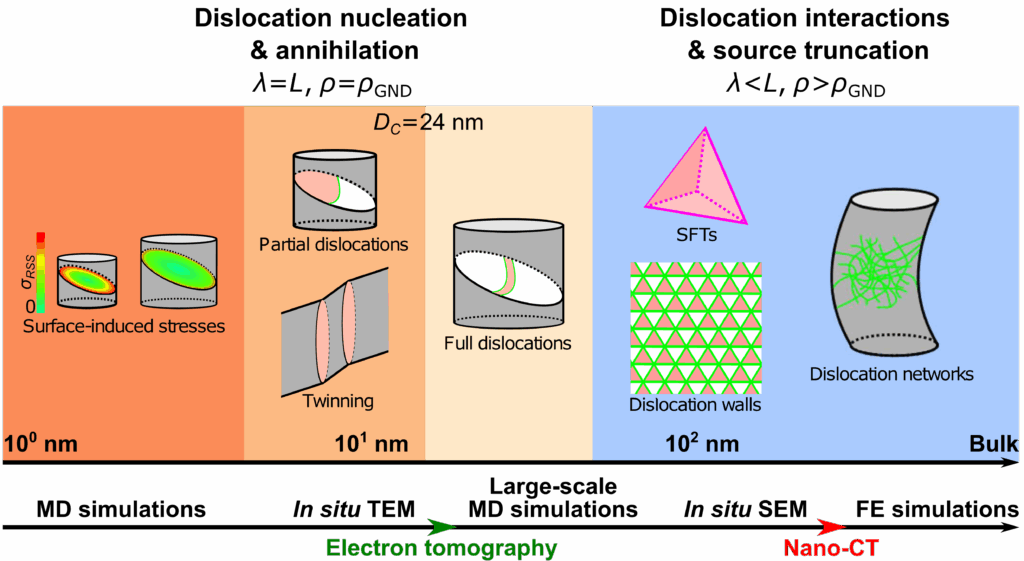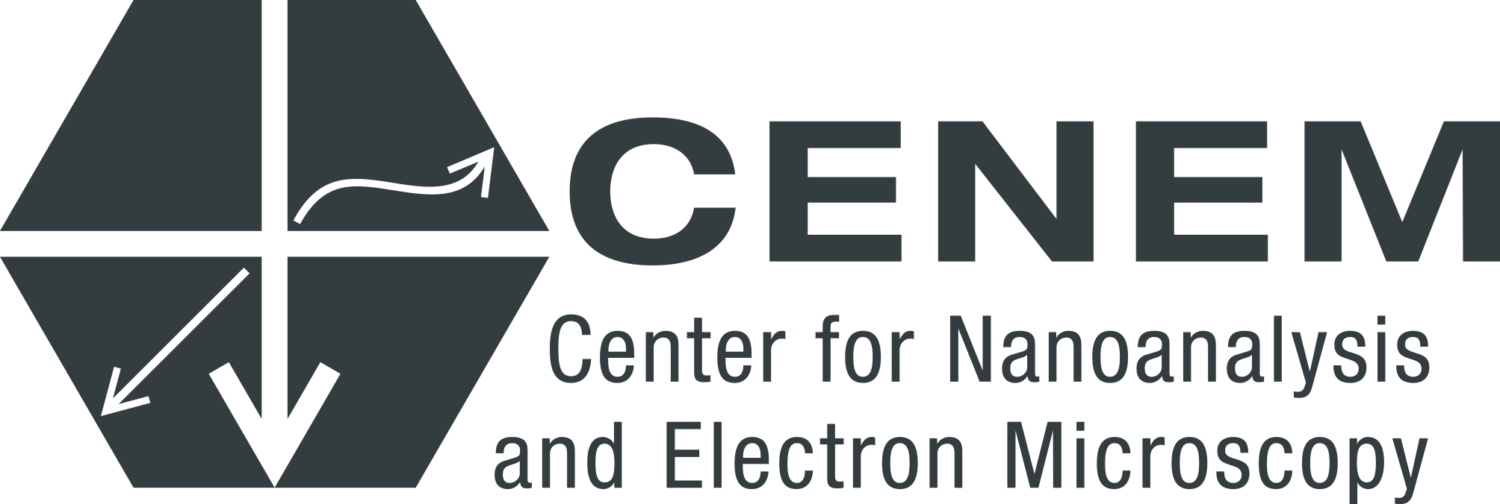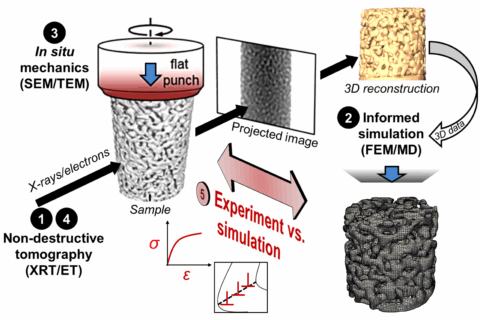New insights into nanoscale plasticity of metallic nanosponges by correlative and scale-bridging microscopy and modeling
We are proud to announce the publication of our paper “Revealing nanoscale plasticity of metallic nanosponges with correlative and scale-bridging 3D microscopy and modelling” in Communications Materials (Nature Portfolio). This study unveils the atomic-scale mechanisms that govern plastic deformation in metallic nanosponges and represents a major outcome of the successfully finished project GRK 1896 “In situ Microscopy with Electrons, X-rays and Scanning Probes.”
The work establishes a comprehensive correlative workflow that bridges experimental 3D electron and X-ray tomography, in situ mechanical testing in TEM and SEM, and experimentally informed simulations spanning from atomistic to continuum scales. Using nanoporous gold as a model system, the researchers reveal how ligament size, network topology, and crystallography control defect formation and size-dependent plasticity across different regimes — from surface-controlled dislocation nucleation at the smallest scales to bulk-like dislocation storage at larger ones.
This integrated approach provides an unprecedented “deformation mechanism landscape” for nanoporous metals, demonstrating the critical importance of realistic 3D geometries in capturing mechanical response and bridging the gap between nanoscale mechanisms and continuum models. Beyond fundamental insights into size effects and defect physics, the study highlights the power of correlative, scale-bridging strategies for advancing our understanding of complex nanostructured materials.

The project was led by Prof. Erdmann Spiecker and Prof. Erik Bitzek (FAU, now at MPI for Sustainable Materials), and mainly accomplished by Dr. Thomas Przybilla and Dr. Zhuocheng Xie (now at RWTH Aachen University). It involved long-standing international collaborations with, among others, Prof. Stefan Sandfeld (now RWTH Aachen University), Dr. Aruna Prakash (now at Technische Universität Bergakademie Freiberg), Dr. Hrishikesh Bale and Dr. Stephen Kelly (Carl Zeiss X-ray Microscopy, USA), and Dr. Julien Guénolé (CNRS, France). The paper reflects nearly a decade of collaborative research, supported by GRK 1896 and complemented by CRC 1411, SPP 1570, and other DFG-funded projects.
Reference:
Przybilla, T., Xie, Z., Prakash, A., Thiess, E., Niekiel, F., Apeleo Zubiri, B., Mačković, M., Schweizer, P., Guénolé, J., Kelly, S. T., Bale, H. A., Wang, D., Sandfeld, S., Bitzek, E. & Spiecker, E.
Revealing nanoscale plasticity of metallic nanosponges with correlative and scale-bridging 3D microscopy and modelling.
Communications Materials (2025). https://doi.org/10.1038/s43246-025-00914-z

